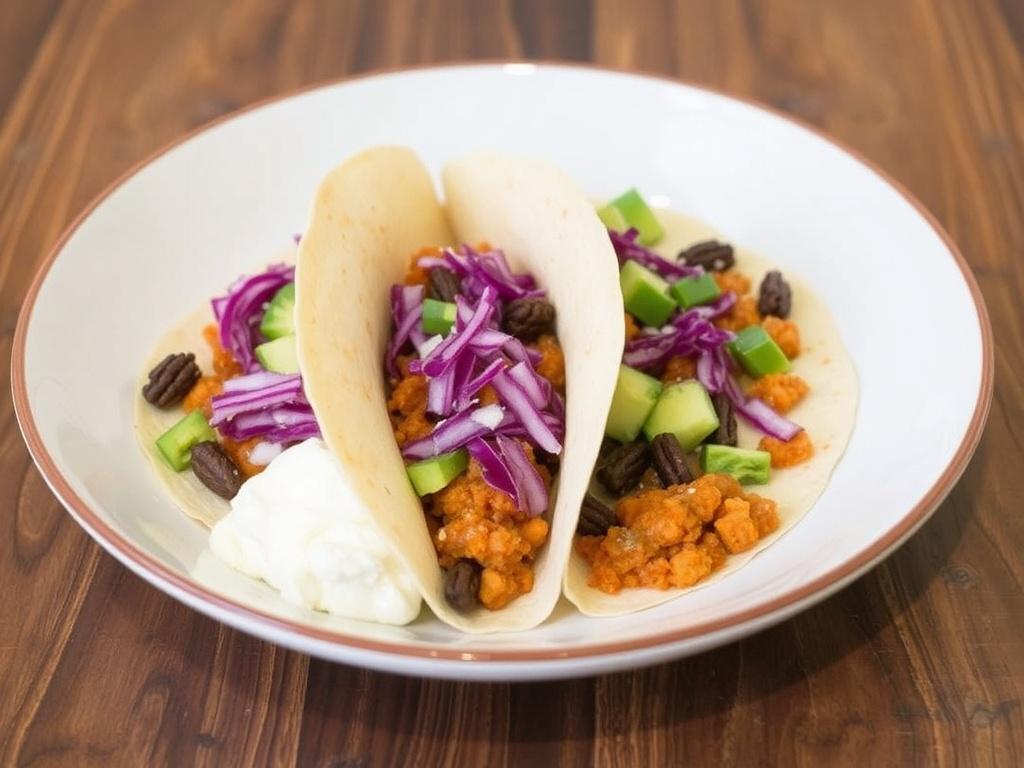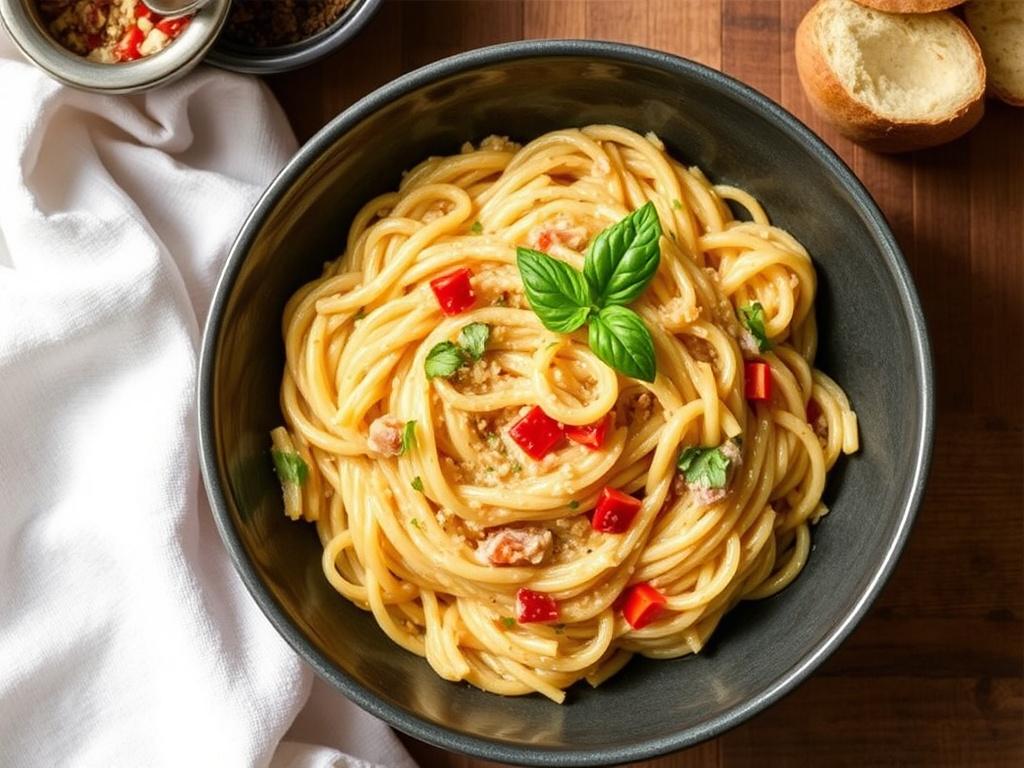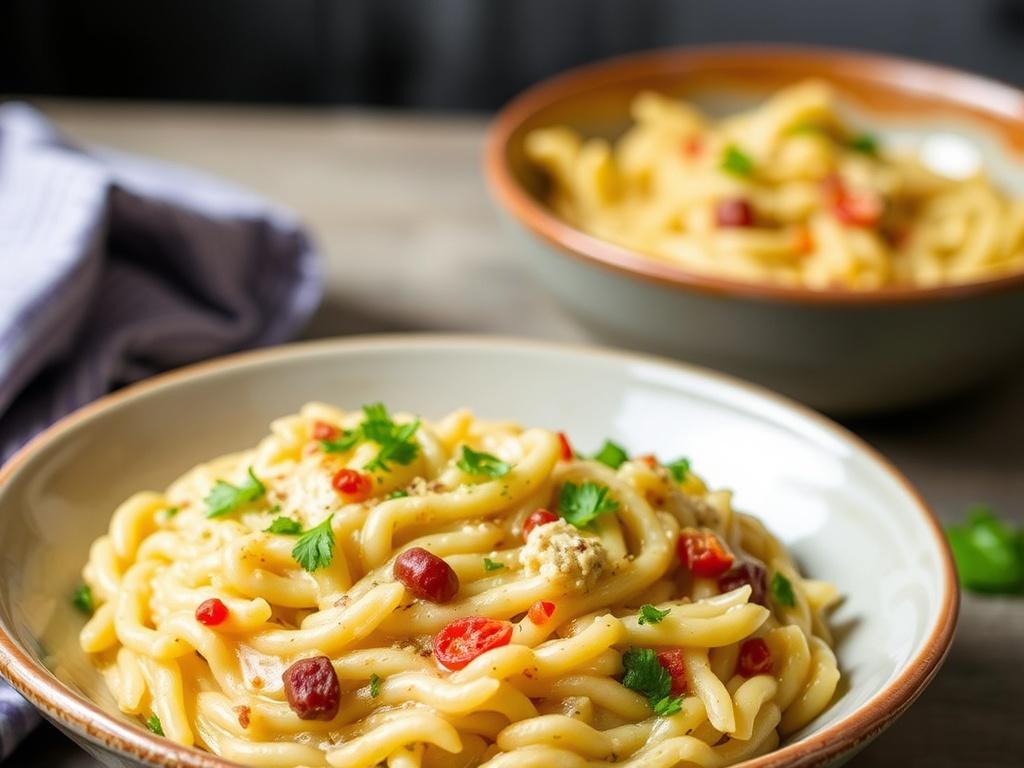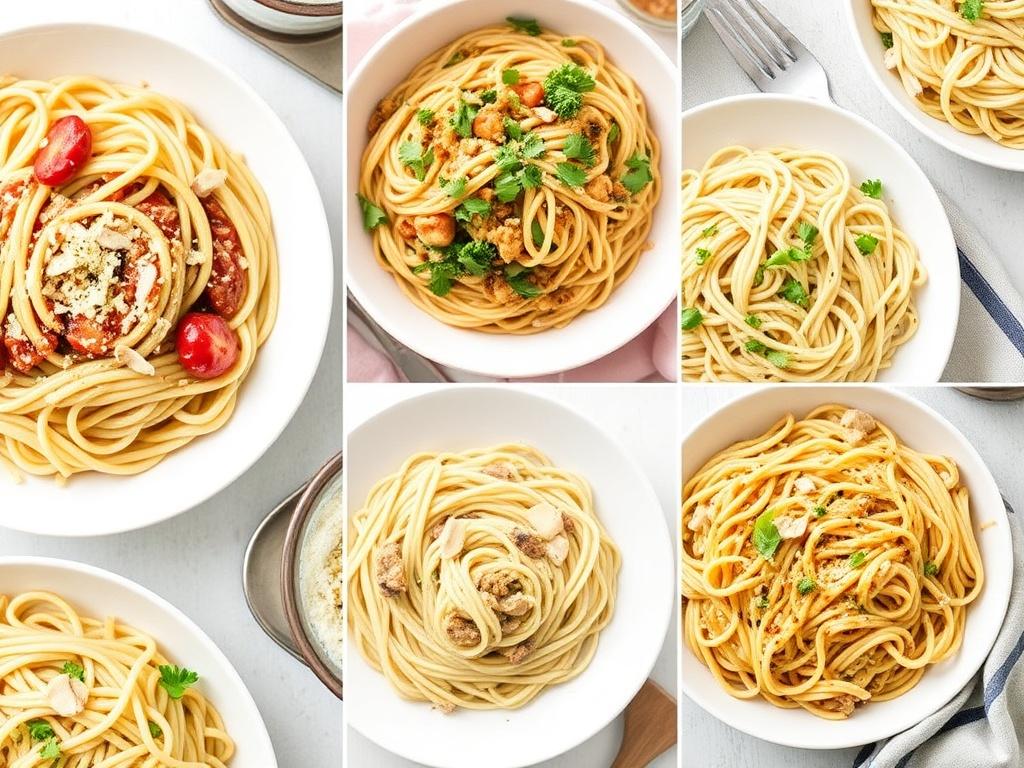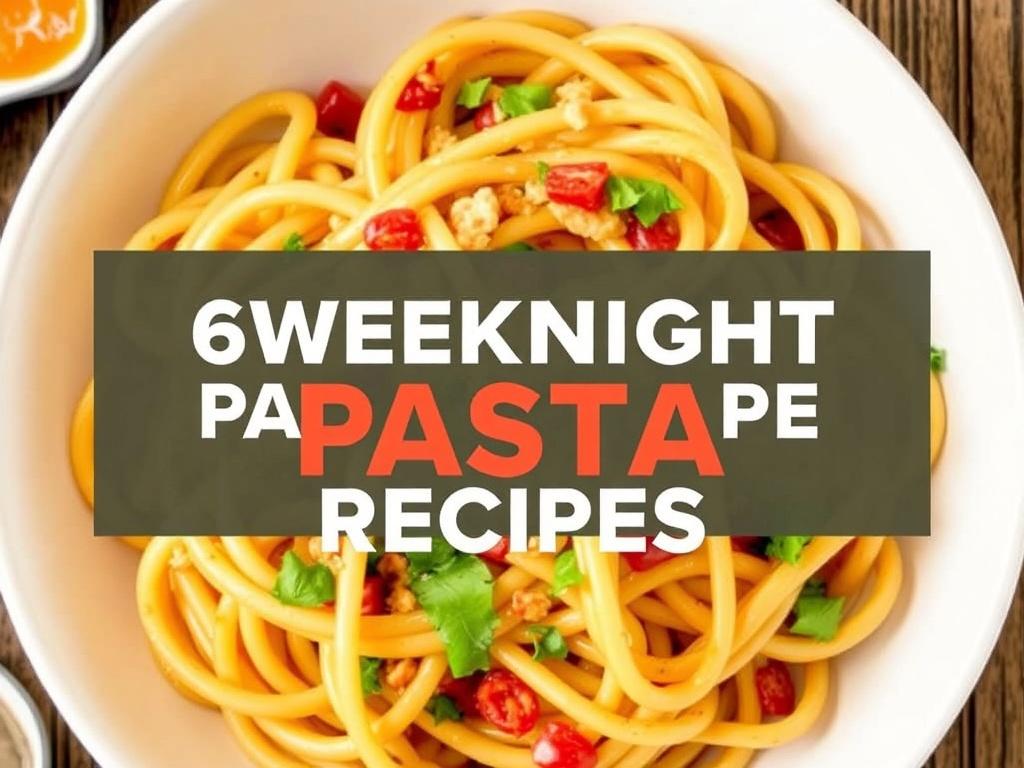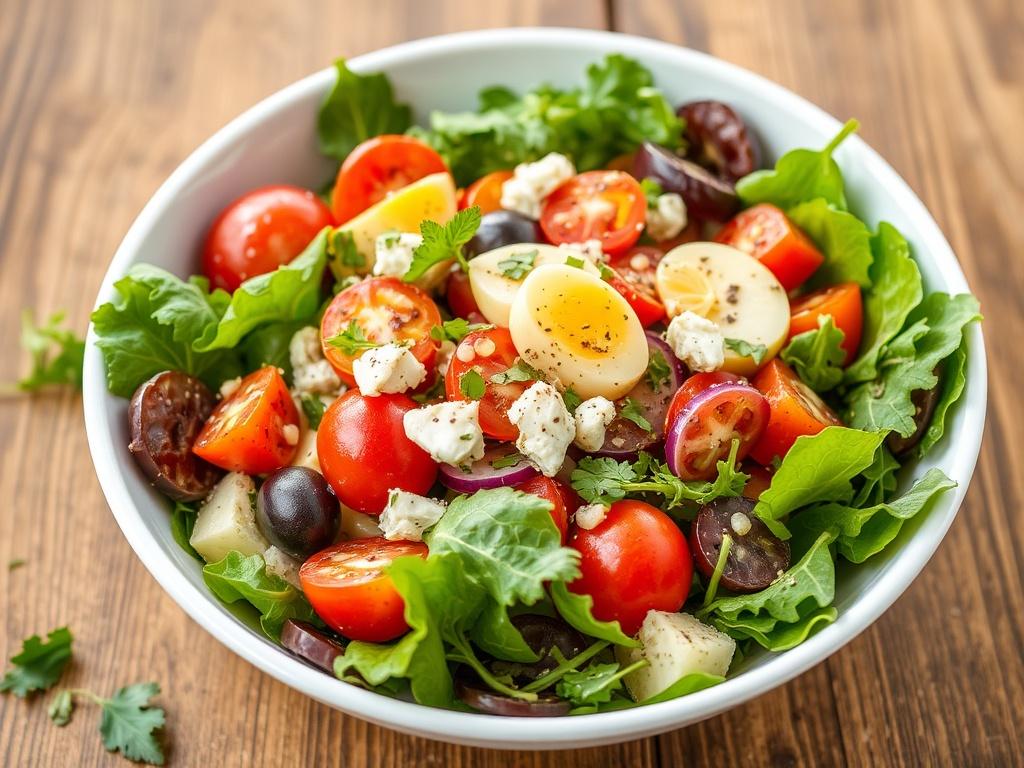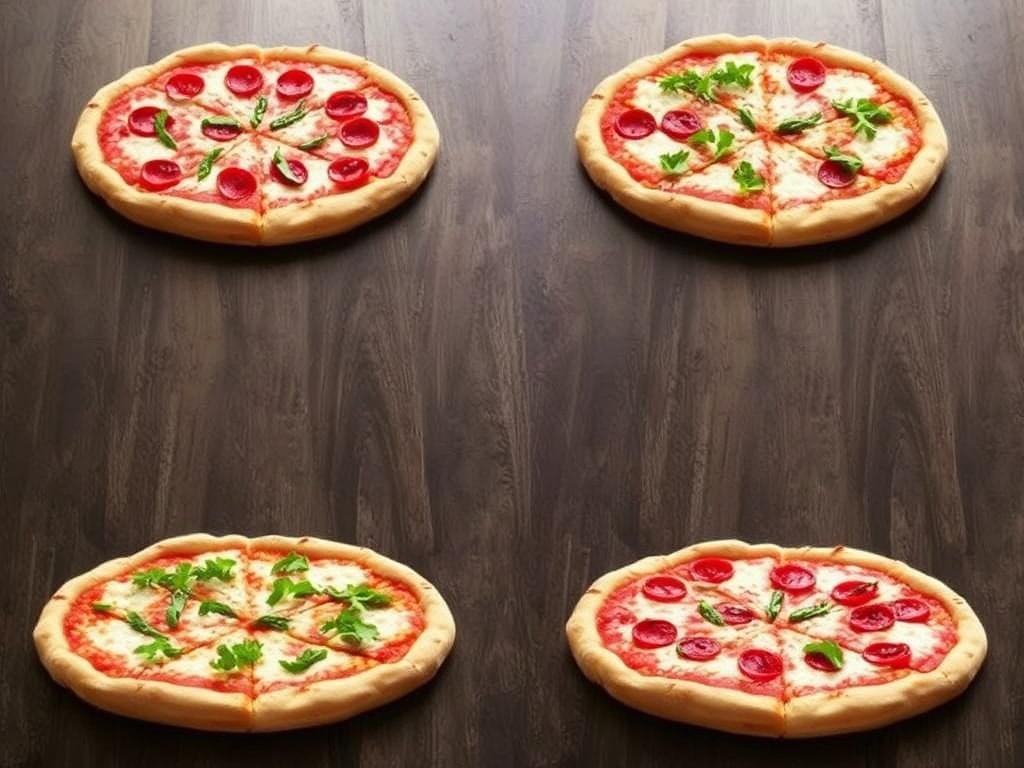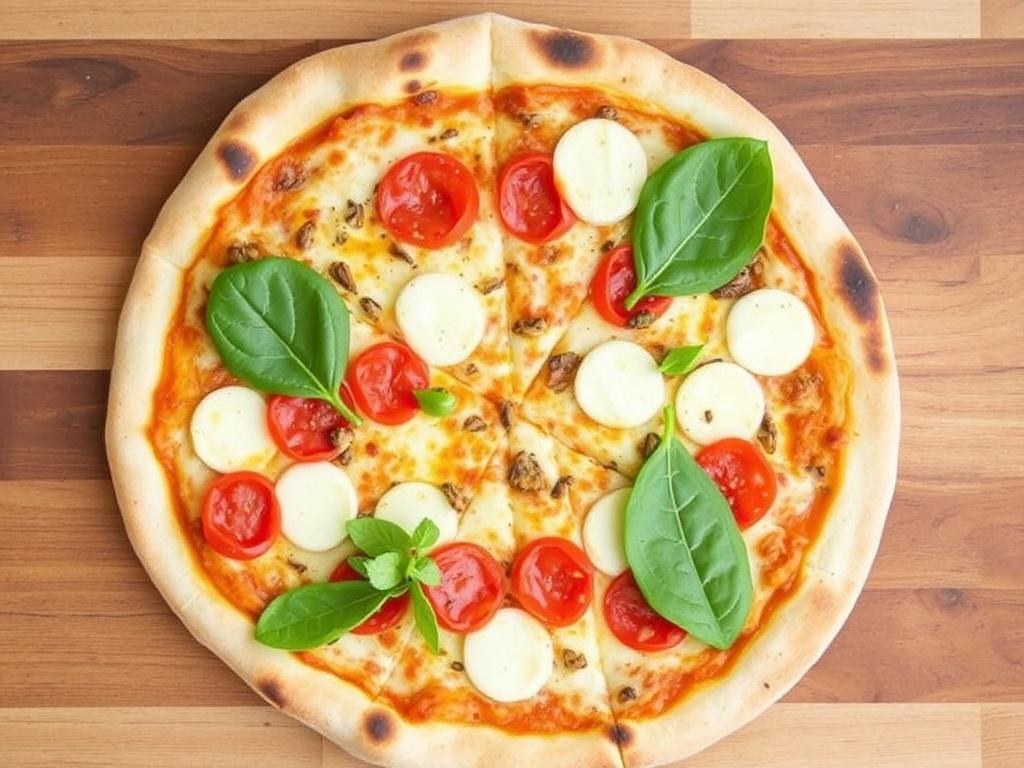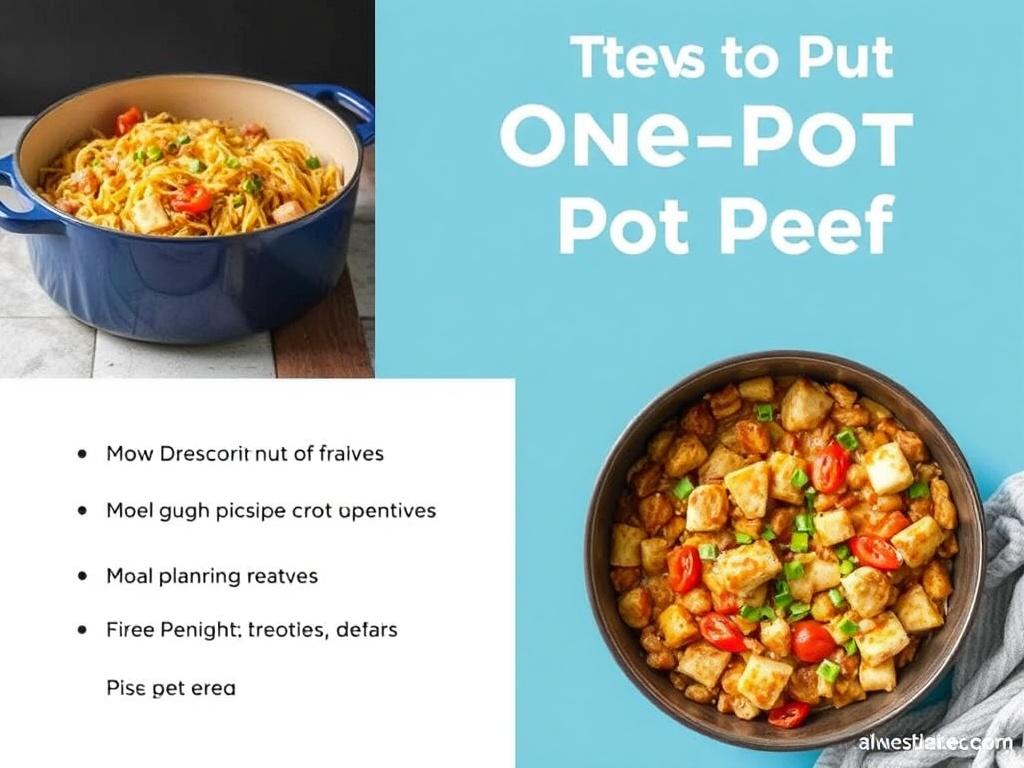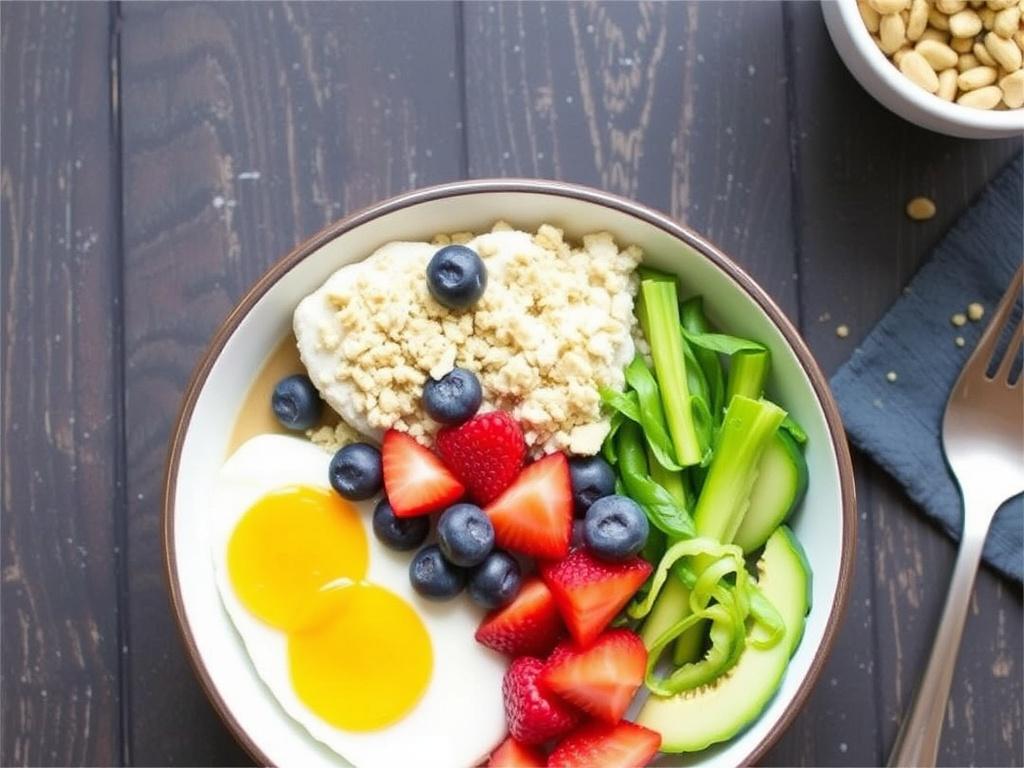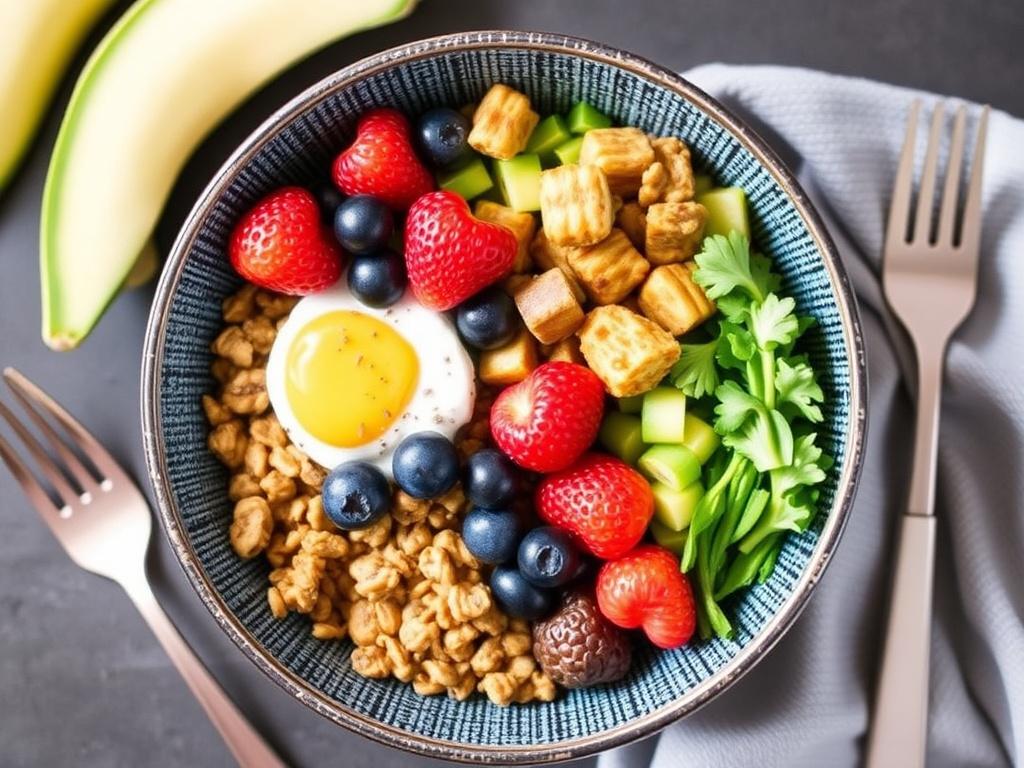Tacos Reimagined: Bold Fillings to Make Weeknight Meals Sing
There’s a particular joy in holding a warm tortilla that’s been dressed with unexpected flavors, and this article is about that exact spark. Creative Taco Fillings for Every Taste will serve as your roadmap: from sticky-sweet pork and charred vegetables to bright seafood and surprising vegetarian swaps. I’ll walk through building balanced bites, suggest combinations that work, and share practical tips so these tacos fit both a lazy Tuesday and a dinner party. Expect recipes you can improvise, pantry-friendly shortcuts, and pairing ideas to round out a meal. No fluff—just flavorful, doable guidance to make tacos your most versatile meal idea.
Start with the basics: tortillas, texture, and balance
A great filling is only half the story; the shell and the textures complete the experience. Choose your vehicle deliberately: a soft corn tortilla reads as authentic and slightly sweet, while a flour tortilla gives structure to heavier fillings. For an extra crisp, warm corn tortillas on a hot skillet until they blister, or fry flour shells briefly for a satisfying crunch. Think in contrasts—creamy avocado against crunchy pickled onions, or silky braised meat paired with a bright herb salsa. Balancing heat, acid, fat, and crunch turns simple taco fillings into something memorable.
Don’t neglect temperature and moisture control: watery fillings make tortillas soggy fast. If a salsa or relish is juicy, spoon it on top rather than underneath. Layering helps too; a smear of crema or a thin slaw acts as a moisture barrier and adds another flavor layer. Consider how each bite will fall apart in your hand—tacos should be messy in a deliberate, delicious way, not disintegrating. Keep a stack of napkins close; it’s part of the fun.
Proteins that surprise: beyond the usual ground beef
Proteins anchor taco fillings, but they don’t need to be predictable. Swap in shredded beef brisket braised in ancho-chili and coffee for deep, smoky notes, or go lighter with pan-seared fish tossed in citrus and chile. Think about cooking technique as much as the protein itself: slow-cooking, quick searing, and charring bring different textures and intensity. Small changes—like finishing chicken with soy and lime—can transform a simple protein into something that sings with complementary toppings. Aim to make the protein flavorful on its own; toppings should accent, not compensate.
For busy cooks, there are smart shortcuts. Rotisserie chicken, quickly shredded and heated with a salsa verde, makes one of my favorite weeknight tacos. Canned seafood, when treated right, can also shine: drained, spiced tuna warmed with onion and jalapeño becomes a surprisingly bright filling. When scaling up for guests, sauté and season proteins ahead of time and reheat briefly on the skillet so they’re warm and juicy at service. Flavor layering is key—season early and adjust at the end.
Beef and lamb variations
When using beef, think in layers: a caramelized crust from high heat, braising liquid for depth, and a finishing acid for brightness. Carne asada, sliced thin and finished with a quick squeeze of orange or lime, is a classic because it’s so balanced. For a cozy, fall-apart option, shredded short rib or brisket braised in tomatoes and ancho chiles offers rich savoriness that pairs beautifully with pickled onions and a parsley chimichurri. Lamb is less common but delivers warmth; slow-braised lamb shoulder with cinnamon and cumin makes an elegant taco that resists being categorized.
Use spice blends intentionally rather than piling on heat. Cumin, coriander, and smoked paprika give beef a rounded profile without stealing the spotlight. For lamb, integrate herbs like mint and za’atar for a Mediterranean twist that still feels taco-friendly. Both meats prefer low-and-slow for tenderness, but finishing on high heat—briefly charring on a griddle—adds fantastic texture and flavor. Dress the finished meat simply so those savory notes remain front and center.
Seafood and shellfish: bright, quick, and elegant
Seafood is an excellent vehicle for vibrant toppings. Fish tacos can be as casual or refined as you like: a quick beer-battered cod is a classic; miso-glazed salmon with pickled cucumbers leans refined. Shrimp cooks in minutes and takes well to bold marinades—garlic, smoked paprika, and lime deliver punch without masking natural sweetness. Shellfish like scallops or lobster elevate tacos into a special-occasion dish when paired with subtle accoutrements like a citrus gremolata or a light slaw.
Use acid to highlight seafood’s delicate flavors. A bright salsa—mango-pineapple, tomatillo-jalapeño, or a grapefruit-avocado mix—adds brightness and textural contrast. Keep cooking times short and avoid heavy sauces that drown delicate flesh. When serving, warm the tortillas so the contrast between hot filling and cool topping is enjoyable. Seafood tacos make for impressive dinner ideas when you want something light but celebratory.
Pork: sweet, sticky, and versatile
Pork offers a wide range of textures and flavors, from quick-cooked carnitas to slow-braised cochinita pibil. The key to great pork tacos is rendering fat into crisp edges while maintaining tender interior meat. For a quick route, dice pork shoulder, season with smoked paprika and oregano, then pan-sear until crisp. Slow-roasted cuts benefit from citrusy marinades or an achiote paste that lends subtle floral and peppery notes.
Balancing pork’s richness with acidity and freshness is essential. A pineapple or apple slaw cuts through fattiness and adds contrast. For sticky preparations—honey-chipotle or orange-soy glazes—serve with raw vegetables or pickles to refresh the palate. Pork adapts to many cuisines; try a Korean-inspired bulgogi pork with kimchi and sliced scallions to surprise guests. These tacos are especially forgiving when you’re feeding a crowd.
Veggie and plant-based proteins that don’t feel like compromise
Vegetarian taco fillings can be as bold as any meat-based option. Roasted cauliflower tossed in curry powder, charred mushrooms with a balsamic glaze, or smoky black beans with cumin all build satisfying textures and deep flavors. The trick is to give plant ingredients a strong treatment: roast until caramelized, season boldly, and finish with a bright acid. Toppings like crumbled queso fresco or a tangy yogurt crema add richness and help mimic the mouthfeel that meat provides.
Jackfruit and seared tofu are excellent carriers of flavor. Jackfruit has a pulled-meat texture and soaks up sauces spectacularly—try braising it in adobo for a punchy taco. Tofu benefits from pressing, marinating, and high-heat searing to develop crust and chew. Legumes, when cooked right, make hearty fillings: lentils with smoked paprika and roasted peppers feel substantial and pair well with herb-forward salsas. These plant-based choices are ideal for those seeking lighter dinner ideas without sacrificing satisfaction.
Dressings, salsas, and finishing touches
Sauces define the personality of a taco. A cool crema softens heat and binds ingredients; a bright chimichurri or cilantro-lime salsa adds herbaceous brightness; an ancho-mole sauce introduces sweet-smoky complexity. Layer sauces with a light hand—too much overwhelms the filling and dampens textures. Consider both flavor and function: creamy elements add richness, acidic sauces brighten, and spicy condiments bring heat.
Below is a compact pairing chart to help you match sauces with fillings. Use it as a jumping-off point rather than a rigid rule; creativity often comes from unexpected pairings.
| Filling | Suggested Sauce | Why it Works |
|---|---|---|
| Slow-braised beef | Ancho-mole or chimichurri | Mole adds depth; chimichurri brightens the rich meat |
| Seared fish | Citrus salsa or salsa verde | Acidity lifts delicate flavors |
| Roasted veggies | Smoky aioli or tahini-lime drizzle | Cream balances caramelized edges |
| Pulled pork | Pineapple salsa or slaw | Sweet-acid cuts through fat |
Toppings and texture boosters
Toppings are where tacos get playful. Finely chopped raw onion or radish gives a sharp crunch. Pickled elements—onions, cucumbers, or jalapeños—introduce acidity and a pleasant bite. Fresh herbs like cilantro, mint, or flat-leaf parsley add brightness and lift heavier fillings. Toasted seeds or crushed tortilla chips contribute grit and interest when you want a contrasting mouthfeel.
Think of toppings as a final seasoning stage: salt and acid are the simplest tools to elevate the whole taco. Finish with a sprinkle of flaky sea salt, a squeeze of lime, and maybe a drizzle of good olive oil for richer fillings. Keep a small bowl of pickles or quick-pickled vegetables on hand; they work with nearly every protein and are an easy way to add brightness to dinner ideas. A well-chosen topping can turn a good taco into something that people remember.
Creative taco builds for every palate
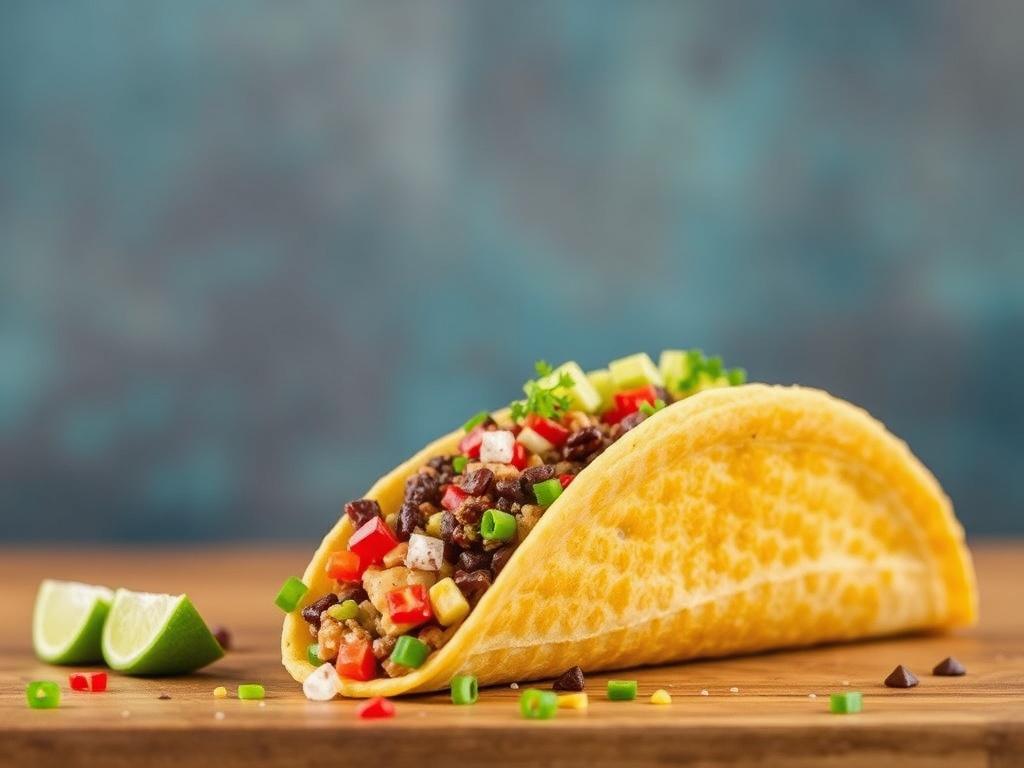
Here are curated combinations to suit varied tastes—comfort, spice, light, and vegetarian. Each build follows a basic blueprint: base protein, supporting flavors, textural element, and finishing sauce. These are meant as templates; swap ingredients based on what’s in season or what’s in your pantry. The goal is to show that tacos are adaptable and can carry flavors from any cuisine without losing their essential charm.
- Smoky brisket, charred scallions, pickled red onion, and cilantro chimichurri.
- Miso-glazed black cod, cucumber slaw, sesame seeds, and yuzu crema.
- Charred cauliflower, roasted chickpeas, tahini-lime sauce, and pomegranate seeds.
- Citrus-marinated pork, grilled pineapple, jalapeño-cilantro slaw, and cotija.
- Spiced lentils, roasted peppers, avocado crema, and crispy shallots.
These ideas make it easy to rotate taco nights without repetition. Mix and match components; for example, a cilantro-lime salsa that pairs with fish will also brighten a pork taco. Treat the list as inspiration rather than instructions—half the fun is personalizing each filling to your taste.
Formats and presentation: from street food to plated courses
Tacos can be casual handhelds or plated courses for a more refined meal. For parties, consider a taco bar: warm tortillas, three proteins, several salsas, and an array of toppings allow guests to assemble their own. If presenting tacos as a plated starter, use smaller tortillas, neat portions, and microgreens for a refined look. On the flip side, messy family-style tortillas wrapped in foil and served with a side of beans feels comforting and communal.
Presentation affects perception. Use fresh, colorful garnishes and vary topping heights to create visual interest. A small lime wedge on the side signals brightness and invites interaction. For plated service, place sauces in dots or streaks rather than pouring them over the top, preserving texture and color. These small decisions turn dinner ideas into memorable meals.
Weeknight strategies: quick, satisfying dinner ideas
Busy evenings call for taco strategies that save time without skimping on flavor. Prep components on the weekend: roast a tray of vegetables, braise a pork shoulder, or make a large pot of seasoned beans. During the week, reheat and assemble—tacos come together faster than most stir-fries. Keep staples in rotation: tortillas, pickles, a basic crema, and a jarred salsa you trust.
Here are five fast dinner ideas that use pantry-friendly elements and take under 30 minutes to assemble from leftovers or quick-cook proteins. They’re practical, flexible, and built for real life.
- Shredded rotisserie chicken + salsa verde + avocado slices + radish.
- Spicy black beans + charred corn + queso fresco + cilantro-lime crema.
- Pan-seared shrimp + mango salsa + shredded cabbage + jalapeño aioli.
- Leftover roast pork + pineapple relish + pickled onions + cotija.
- Tofu crumbles + sautéed spinach + sesame-soy glaze + scallions.
Batch cooking and make-ahead tips
Make-ahead tactics stretch your efforts further and make taco nights effortless. Cook larger batches of proteins and freeze in portioned containers. Prepare salsas and pickles that develop more flavor over a day or two—quick-pickled onions improve remarkably overnight. Store tortillas wrapped in a towel within an airtight bag and warm them straight from the bag on a hot skillet briefly to revive freshness.
When freezing, avoid mixing sauces into proteins; keep them separate to preserve texture. For travel-friendly meal prep, pack fillings in separate containers and assemble at mealtime. Label and date everything. These small practices make tacos a realistic option even during the busiest weeks without compromising taste or texture.
Shopping smart and pantry essentials
Having the right pantry staples broadens your taco repertoire instantly. Keep a few dried chilies, good-quality canned tomatoes, a jar of pickled jalapeños, and a couple of vinegars on hand. A block of queso fresco or feta, limes, tortillas, and a resilient herb like cilantro make a huge difference. Frozen shrimp, canned beans, and jarred adobo are excellent for last-minute tacos.
Seasonings deserve attention: smoked paprika, cumin, coriander seeds, and chili powders form the backbone of many fillings. Invest in a neutral oil and a small bottle of toasted sesame oil for cross-cultural fusion recipes. With these staples, you can improvise fillings from what’s in the fridge and still arrive at focused, satisfying flavors that feel intentional.
My experiments in the kitchen
Over the years I’ve treated tacos as a laboratory for flavor. I once crisped leftover Thanksgiving turkey with a chili-citrus glaze and paired it with cranberry salsa—an oddly perfect holiday taco that became a family favorite. Another time, a late-night search in the fridge yielded smoked salmon, cream cheese, and pickled cucumber; wrapped in warm tortillas, it felt like a seaside bagel reborn as a creative taco. These small experiments taught me that rules exist to be bent; the best tacos often come from playful substitutions.
One persistent lesson: keep components simple but clearly defined. When I overcomplicated a filling with too many competing flavors, the taco lost focus. The most successful combinations had one dominant flavor, one contrasting element, and one texture for balance. That structure has guided my improvisations and helped meal planning feel less like guesswork and more like a creative exercise.
Final notes for the adventurous cook
Tacos are an invitation to explore flavors without intimidation. Start with a reliable protein and add one unexpected element—a spice, an herb, or a fruit-based salsa—to transform the ordinary into the memorable. Rotate through the suggested builds and tweak them to match what’s fresh and on sale. Keep practicing seasoning and temperature control; small technique improvements yield big rewards.
These ideas are meant to spark experimentation and simplify dinner ideas rather than prescribe rigid recipes. Use the templates, experiment a little, and you’ll find the combinations that become your household favorites. Tacos are endlessly forgiving and endlessly satisfying; enjoy the process of making them your own.
